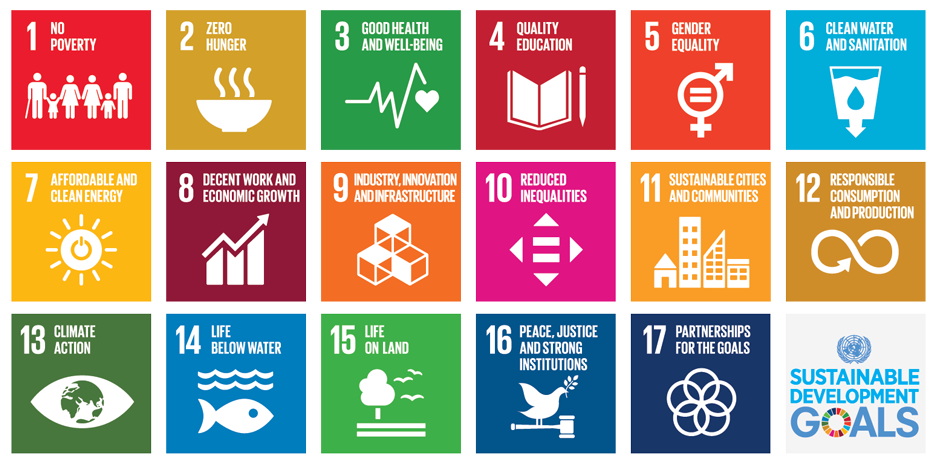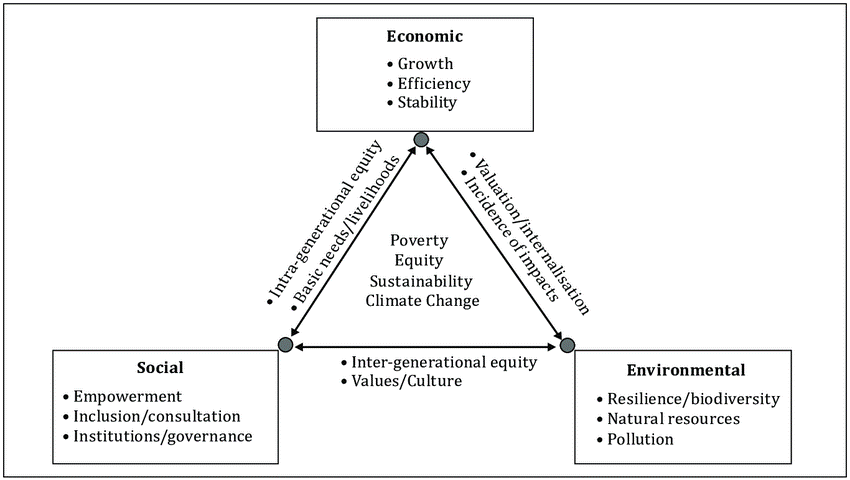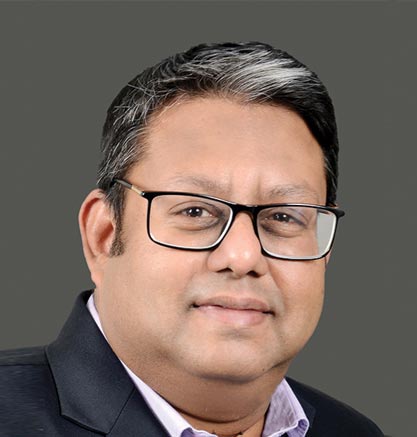-
CENTRES
Progammes & Centres
Location
 PDF Download
PDF Download 
AS THE WORLD reaches the mid-point of the window for the achievement of the United Nations Sustainable Development Goals (SDGs), two questions confront global leaders and development stakeholders: Are we on track to achieve the SDGs? What can we do to accelerate efforts to meet them? For many countries, the COVID-19 pandemic was a shock that reversed decades of progress. Nonetheless, the world demonstrated remarkable resilience in making a recovery, and India managed the pandemic without allowing it to derail development and growth.[1]
A reason for India’s resilience has been the wealth of lighthouse initiatives that bulwark the nation against external shocks. India’s Presidency of the G20, and its leadership in crafting a development agenda for the Global South, has allowed the country to draw attention to many of these best practices and encourage their adoption. As we begin to look ahead to a world beyond the 2030 Agenda, this publication showcases 17 lighthouse case studies from India—each primarily addressing one specific SDG—which could bring about a potential transformation if scaled and replicated in other geographies. Implementing these ideas could hasten our journey to the SDGs, and provide a strong foundation on which a post-2030 agenda might build further.
Before the SDGs, between 2000 and 2015, the global community aimed to achieve the United Nations Millennium Development Goals (MDGs) and the period witnessed a surge in development initiatives worldwide. As 2015 dawned, however, it was apparent that while impressive strides had been made on many of the MDG targets, progress was uneven across regions and countries. For instance, 800 million people continued to live in poverty and experience hunger globally. Yet, the considerable success of the MDG agenda proved that global action works and a concerted approach to international development must be adopted.[2]
For India, the MDG era was marked by notable gains: despite slow progress in the targets on hunger, maternal mortality, and sanitation, the country met the goals related to poverty, education, health, environment, and information technology.[3] This provided the context for India’s adoption, along with other UN member states, of the historic document, Transforming Our World: The 2030 Agenda for Sustainable Development at the 70th Session of the UN General Assembly on 25 September 2015.[4]
Comprising 17 Goals and 169 associated Targets, the Sustainable Development Goals (SDGs) are the most wide-ranging and ambitious global goals in history that seek to integrate the social, economic, and environmental dimensions of development.[5] At the heart of the SDGs lies the principle of universality—the resolve to ‘Leave No One Behind’. Moreover, the idea of inclusion, and the awareness that it is no longer sufficient to focus only on economic growth but on building more equal societies, threads the Goals.[6] The SDGs place the onus on countries to monitor and review at their level the implementation of the Goals and Targets between 2016 and 2030.

Addressing the UN on the occasion of the adoption of the SDGs, Prime Minister Narendra Modi declared that “just as our vision behind the Agenda 2030 is lofty, our goals are comprehensive.”[7] He went on to identify some of the priorities the SDGs address, which if acted upon, could transform the global development landscape. These included the “elimination of poverty in all forms”, the recognition that “economic growth, industrialisation, infrastructure, and access to energy provide the foundations of development”, a strong focus on “environmental goals, especially climate change and sustainable consumption”, and a concern for the “ocean ecosystem [that] reflects the unique character of its challenges and opportunities.”
The prime minister observed that much of India’s current development agenda was mirrored in the SDGs. Eliminating poverty, for instance, has been an aspiration India has pursued single-mindedly by uplifting the poor and focusing on education and skill development. The country has transcended the traditional dichotomy between the public and private sectors by “defining a new personal sector of individual enterprise, micro enterprises and micro finance” that leverages digital devices and applications.[8] National goals to achieve housing, electricity, water, and sanitation for all have concrete timelines which India is adhering to rigorously. And all development efforts are “intrinsically linked to the empowerment of women”, beginning with a massive nationwide programme to educate the girl child.
At a broader sectoral level too, India had powered ahead by boosting its service sector, upscaling infrastructure, building smart and progressive cities, investing in renewable energy, and reducing the energy intensity of national growth. Taken together, the prime minister said, India’s citizen-focused and macro-level initiatives demonstrated the country’s “commitment to the future”, and represented “a culture that calls our planet Mother Earth”.[9]
From being an underdeveloped and resource-poor country at the time of independence, today India is on the verge of becoming a US$ 5-trillion economy. The International Monetary Fund has forecast that India could cross this milestone in 2026-27,[10] and the country is making every effort to fast-track progress despite the setbacks caused by the COVID-19 pandemic.
Even as the suitability of Gross Domestic Product (GDP) continues to be debated as a measure of economic growth but not necessarily of economic well-being,[11] in March 2023, the Indian Minister of State for Finance pointed out that the nation’s roadmap for transforming the country into a US$ 5-trillion economy includes key measures such as focusing on inclusive growth, promoting technology-enabled advancement and the growth of the digital economy, supporting climate action and the energy transition, and facilitating a positive cycle of investment and growth.[12] In other words, India’s vision of economic growth has expanded to encompass many of the core elements that the SDGs emphasise, and to suggest a reflexive relationship between personal welfare and macro growth. More recently too, the Indian leadership has reiterated the need for a shift from a “GDP-centric worldview to a human-centric one.”[13]
This was not always the case. Indian development thought and action following independence, and particularly in the post-liberalisation years of the early 1990s, may occasionally have tended to privilege the pursuit of economic growth without fully recognising its possible implications for issues of equity, environmental concerns, and the preservation of natural ecosystems.[14] In the long term, these approaches may sometimes have revealed the costs of growth—contributing to intermittent pockets of inequality, belatedly triggering rehabilitation challenges even as the creation of infrastructure continued apace, or adversely affecting human habitats.[15] Nonetheless, the importance of physical capital for spurring economic growth cannot be overlooked, and there is evidence to show that physical infrastructure has strengthened India’s economic competitiveness at a national level.[16] Perhaps the ‘growth versus development’ conundrum is a paradox every erstwhile colony and young nation must contend with.
To be sure, decades of debates about whether growth can be regarded as the only parameter of development or economic progress have had an effect on the discourse. So have the Club of Rome’s persuasive ‘limits to growth’ theory that warns of a catastrophe unless the relentless depletion of natural resources and conventional notions of technological progress were abandoned;[17] and the Brundtland Commission’s classic definition of sustainable development as “development that meets the needs of the present generation without compromising the ability of future generations to meet their own needs.”[18] Similarly influential has been Sri Lankan economist Mohan Munasinghe’s conception of ‘sustainomics’, presenting a model of engagement between social, economic and environmental concerns which constitutes a “practical framework for making development more sustainable”,[19] and providing much of the theoretical underpinning for the SDGs.

The sustainomics triangle
India’s own development trajectory has been influenced by these global ideas as well as the successes of some of its own domestic development programmes during the period of the MDGs. As the SDG era began, the Indian government formally acknowledged that the 2030 Agenda “reflects our evolving understanding of the social, economic, and environmental linkages that define our lives.”[20] The pathway to development that this new way of thinking has set India upon has yielded valuable dividends since 2016. With tangible achievements across sectors, today the NITI Aayog has designated[a] 15 of India’s 28 states as ‘frontrunners’ with respect to their SDG performance, and the remaining 13 are labelled as ‘performers’.[21] Meanwhile, seven of the country’s nine union territories are regarded as ‘frontrunners’, and two are ‘performers’.

In December 2022, India assumed the Presidency of the Group of 20 (G20). It was a pivotal moment. For the first time in the Group’s history, the G20 troika—i.e. the outgoing President, Indonesia; the incoming President, India; and the future President, Brazil—would consist of developing nations.[22] And with South Africa slated to succeed Brazil in 2025, emerging economies stood to helm the G20 for four consecutive years. As Prime Minister Modi and other world leaders have pointed out, this presented a crucial window of opportunity to reflect the voices and challenges of the Global South at the G20, to put inclusive growth and sustainable development squarely on the Group’s agenda, and to steer that agenda over a four-year period.[23]
During the Indian Presidency, the SDGs have been a cross-cutting focus of the G20 Working Groups and Engagement Groups. But it is India’s extraordinarily inclusive and participatory approach to shaping a global development agenda that has consolidated its position as the legitimate voice of the Global South, and as a champion of the growth of underrepresented nations. Among India’s first actions as President was to conduct a pioneering exercise called the ‘Voice of the Global South Summit’ in January 2023, whereby it entered into a dialogue with 125 countries in order to better understand their development concerns, and to shape its priorities at the G20 accordingly.[24] Guided by the same imperatives, and encouraged by a long history of development cooperation, India has also pushed for the inclusion of the African Union as a permanent member of the G20.[25]
There have been a number of standout SDG-related interventions during India’s tenure. Arguably, chief among these is the unanimously adopted G20 2023 Action Plan to Accelerate Progress on the SDGs, a bold seven-year integrated roadmap to meet the 2030 Agenda. The Action Plan aims to “accelerate achievement of all SDGs in all regions by promoting collaboration among G20 work streams.”[26] It begins by outlining a set of high-level principles towards this end, and then moves into more specific domains such as financing for advancing the SDGs. The ‘Targeted Actions on Transformative Transition Areas’ constitute the heart of the document, outlining the G20’s commitment to an inclusive digital transformation; laying down the ‘G20 High Level Principles on Harnessing Data for Development (D4D)’ (which also endorse India’s decision to launch a voluntary ‘Data for Development Capacity Building Initiative’ for G20 stakeholders); evolving concrete actions to implement just transitions globally; and proposing a blueprint for attaining ‘Sustainable Development through Gender Equality and Empowerment of Women’. The Plan concludes by suggesting G20-wide coordination mechanisms for its effective execution. It is by any measure a seminal document, and one of the principal instruments through which “India’s G20 Presidency brought development back in the spotlight,” as External Affairs Minister S Jaishankar described it.[27]
A number of other India-led actions have had a significant impact at the G20. For instance, the promotion of digital public infrastructure (DPI)—seen as a powerful accelerator of the SDGs—has been a core priority.[28] India’s foundational DPIs (i.e., the Aadhaar digital ID, the Unified Payments Interface, and the Data Empowerment and Protection Architecture) have transformed public service delivery and citizen empowerment, and unleashed innovation at scale.[b] At the G20, India has been able to achieve a shared understanding of DPI; build acceptance of a high-level G20 Framework for Systems of DPI outlining principles for the design, development and deployment of DPIs; and ensure agreement on the need for increased funding for developing DPIs in low- and middle-income countries.[29]
Women-led development has been yet another rallying point. Foregrounding the role of women’s leadership for achieving progress is a novel approach that goes beyond SDG5 (that calls for gender equality), and envisions a new narrative of social, economic, and political transformation. In June 2023, Prime Minister Modi urged G20 Ministers to adopt a “game-changing action plan for women-led development,”[30] and earlier, in March, he had remarked that over the last nine years, India had transitioned from supporting women’s development to enabling women-led development.[31] The figures bear this out. Today, women occupy 36 percent of senior and leadership positions in mid-sized businesses in India, surpassing the global average by 4 percentage points. As the pandemic paralysed the country, women from 6 million self-help groups spearheaded India’s mission to save lives.[32] Nearly 280 million women have availed of loans under the MUDRA (Micro Units Development and Refinance Agency) scheme,[33] unlocking personal economic potential on an unprecedented scale.[c] And women’s enrolment in the fields of STEM is currently at 43 percent, and is powering a rising, digital India.[34]
Finally, India’s pathbreaking LiFE (Lifestyle for Environment) Mission has gained traction, and helped mainstream the idea that the environment-friendly and responsible consumption choices we make as individuals could contribute to a cleaner, greener planet. These deliberations have culminated in the G20 High-Level Principles on Lifestyles for Sustainable Development.[35] In the space of environmental stewardship and climate action too, a consensus has been forged on a normative framework for building a sustainable and resilient blue economy.[36] The Indian Presidency has been able to infuse both developing and advanced nations with forward-looking ideas about leaving no one behind. At a time when there is much to be gained from putting humanity first, adopting a pro-planet outlook, and placing inclusion and equity at the heart of internationalism, India—with its ethos of Vasudhaiva Kutumbakam (One Earth, One Family, One Future)—is showing the way.
Visiting India in October 2022, António Guterres, Secretary-General of the United Nations, observed that with one-sixth of the world’s population and the largest proportion of young people, India could “make or break” the 2030 Agenda.[37] Presaging what India would go on to do at the G20, he said that “India has an unprecedented opportunity to speak up for the Global South and to lead by example, as a model of resilience and an advocate for sustainable development and climate justice.” Indeed, many of the examples in the foregoing sections point to a uniquely Indian approach—the desire to experiment and excel domestically, share these experiences internationally, and work with partner nations to elevate them to the level of best practices globally.
Governments, however, also need a supporting groundswell of initiative and zeal from civil society organisations (CSOs), businesses, and citizens to make development a reality. CSOs in particular often bridge communities, on the one hand, and the government’s vision and efforts to steer progress, on the other. With their on-ground stakeholder relationships, practical insights about local contexts, and reach at the last mile, CSOs are especially well-placed to implement development targets. As the UN notes, “civil society organizations link governments and people” and “play a critical role to deliver on the SDGs.”[38]
September 2023 is a watershed moment. With the G20 Leaders’ Summit in New Delhi, the Indian G20 Presidency entered its concluding phase; and the high-level SDG Summit in New York marked the culmination of the global mid-term review of the SDGs. The former reaffirmed the G20’s commitment to act on the SDGs “fully and effectively”;[39] and the latter heralds a new phase of accelerated progress towards them, with the UN Secretary-General underlining that the Goals “carry the hopes, dreams, aspirations and expectations of people everywhere.”[40] It is also an especially important moment to acknowledge the outstanding contribution that CSOs are making to the 2030 Agenda, and to recognise that they will be key actors over the next seven years, and beyond.
This is the context of our publication of Ideas, Innovation, Implementation: India’s Journey Towards the SDGs. The book explores 17 civil society lighthouse initiatives that are advancing the 17 SDGs in India. In doing so, it presents a broad spectrum of successful development models that could be replicated in other nations of the Global South and North. The book is also a celebration of diversity; it brings together the different voices and approaches of multilateral agencies, philanthropic foundations, grassroots CSOs, community-based organisations, and inspiring individuals, all united in their mission to catalyse India’s journey towards the SDGs.
For SDGs 1 to 16, every chapter outlines a development challenge encountered in a particular region, or across regions, or at a pan-India level. It then goes on to examine a programme implemented to address the challenge, with a focus on its objectives and rationale, the early difficulties encountered and solutions found, and—in some detail—its execution, innovativeness, and impact. In the process, each chapter identifies some of the key drivers of the ecosystem that supported the programme’s success (such as enabling policies or institutional capacities), and also reflects on what makes the initiative a lighthouse case, a potentially replicable best practice, and a legacy for the post-SDG era.
The chapter on SDG17 (‘Partnerships for the Goals’) is somewhat different from the first 16, dealing as it does with India’s highly effective development cooperation models, and the in-country multistakeholder partnerships it has been able to set up between governments, CSOs and the private sector. The volume concludes with a chapter that explores what a post-2030 development agenda might include, and particularly how India might navigate the 17 years after the 17 Goals until 2047, when India turns one hundred.
Given the multiplicity of thematic areas, the breadth of interventions, and the practical details of planning and implementation that it covers, Ideas, Innovation, Implementation could act as a valuable tool for policymakers, programme administrators, and field-level practitioners alike. For this volume, we are grateful for the partnership of the United Nations in India, and their support for the collective commitment of Reliance Foundation and Observer Research Foundation (ORF) towards India’s development agenda. This is the fourth and most ambitious book yet in the Reliance Foundation-ORF series about transformations in development and governance. As India moves ahead through the Amrit Kaal, the crucial 25-year period for national development that will transform the country in the lead-up to its centenary of independence, Reliance Foundation and ORF will continue to promote and publish research on models of engagement and action that are changing lives and shaping futures. These studies of institutional leadership, innovation, and triumph must be brought before the widest possible audience, and we remain committed to doing so.
Read the report here.
[a] The NITI Aayog’s SDG Index measures the performance of Indian states and union territories on their SDG performance, and categorises them as ‘Achievers’ (with a full score of 100), ‘Frontrunners’ (with a score of 65-99), ‘Performers’ (with a score of 50-64), and ‘Aspirants’ (with a score of 0-49).
[b] Today, over 99.9 percent of Indian adults use their Aadhaar digital ID to avail public services; Indians make 30 million transactions daily via the Unified Payments Interface; and the country operates the world’s largest tech-enabled financial inclusion programme.
[c] Launched in 2015, the MUDRA scheme provides loans to the non-corporate and non-farm small business sector.
[1] Bindu S Perappadan, “World lived through a pandemic and India played a critical role: WHO scientist”, The Hindu, June 7, 2023, https://www.thehindu.com/news/national/world-lived-through-a-pandemic-and-india-played-a-critical-role-who-scientist/article66939043.ece.
[2] United Nations, The Millennium Development Goals Report, 2015, https://www.un.org/millenniumgoals/2015_MDG_Report/pdf/MDG%202015%20rev%20(July%201).pdf.
[3] Ministry of Statistics and Programme Implementation, Government of India, Millennium Development Goals: Final Country Report of India, November 27, 2017, https://www.mospi.gov.in/sites/default/files/publication_reports/MDG_Final_Country_report_of_India_27nov17.pdf.
[4] United Nations, Transforming our World: The 2030 Agenda for Sustainable Development, 2015, https://sdgs.un.org/2030agenda.
[5] UNDESA, "The 17 Goals”, https://sdgs.un.org/goals.
[6] UN in India, "Sustainable Development Goals" https://india.un.org/en/sdgs.
[7] "Text of PM's Statement at the United Nations Summit for the Adoption of Post-2015 Development Agenda", September 25, 2015, https://www.narendramodi.in/text-of-pm-s-statement-at-the-united-nations-summit-for-the-adoption-of-post-2015-development-agenda-332923.
[8] "Text of PM's Statement at the United Nations Summit for the Adoption of Post-2015 Development Agenda".
[9] "Text of PM's Statement at the United Nations Summit for the Adoption of Post-2015 Development Agenda".
[10] Indivjal Dhasmana, “IMF 'corrects' maths, says India to be $5-trillion economy by FY27”, Business Standard, May 20, 2022, https://www.business-standard.com/article/economy-policy/imf-corrects-maths-says-india-to-be-5-trillion-economy-by-fy27-122051901704_1.html.
[11] "India to Be USD 5 Trillion Economy by FY2026: CEA Anantha Nageswaran", The Economic Times, January 31, 2023, https://economictimes.indiatimes.com/news/economy/finance/india-to-be-usd-5-trillion-economy-by-fy2026-cea-anantha-nageswaran/articleshow/97500680.cms?from=mdr.
[12] "Focusing on Roadmap to Make India a 5 Trillion Economy: Govt.", Mint, August 1, 2023, https://www.livemint.com/economy/focusing-on-roadmap-to-make-india-a-5-trillion-economy-govt-11690892172005.html.
[13] “From GDP-centric worldview to human-centric one: PM Modi on India’s G20 presidency”, India Today, September 7, 2023, https://www.indiatoday.in/india/story/from-gdp-centric-worldview-to-human-centred-one-pm-modi-on-indias-g20-presidency-2432146-2023-09-07.
[14] Nilanjan Ghosh, “Introduction” in Nilanjan Ghosh, ed, Azadi Ki Amrit Mahotsav: 10 Policies Shaping a Sustainable India, Observer Research Foundation, 2022, https://www.orfonline.org/wp-content/uploads/2022/08/Policies-Shaping-a-Sustainable-India.pdf.
[15] Himanshu, "A Panoramic Look at Our Three Decades of Economic Reforms", Mint, July 15, 2021, https://www.livemint.com/opinion/columns/a-panoramic-look-at-our-three-decades-of-economic-reforms-11626363933423.html.
[16] Nilanjan Ghosh, “Introduction”.
[17] The Club of Rome, Limits to Growth, 1972, Potomac Associates, https://www.clubofrome.org/publication/the-limits-to-growth/.
[18] Britannica, “Brundtland Report”, https://www.britannica.com/topic/Brundtland-Report.
[19] Mohan Munasinghe, "Sustainomics: Economics of Sustainability”, http://www.mohanmunasinghe.com/sustainomics.cfm.
[20] "Text of PM's Statement at the United Nations Summit for the Adoption of Post-2015 Development Agenda".
[21] NITI Aayog, "SDG India Index and Dashboard: 2023-24", https://sdgindiaindex.niti.gov.in/#/ranking
[22] "India's G20 Presidency an Opportunity for Developing Countries to Mainstream Climate Change Agenda: Environmentalists", The Economic Times, January 21, 2023, https://economictimes.indiatimes.com/news/india/indias-g-20-presidency-an-opportunity-for-developing-countries-to-mainstream-climate-change-agenda-environmentalists/articleshow/97195425.cms?from=mdr.
[23] Rahul Kunal, "BT Exclusive: This G20 Reflects the Voice of the Global South, Says PM Narendra Modi", Business Today, August 26, 2023, https://www.businesstoday.in/interactive/photo-essay/bt-exclusive-this-g20-reflects-the-voice-of-the-global-south-says-pm-narendra-modi-83-26-08-2023.
[24] "India Adopted Unconventional Approach to Its G20 Presidency: Jaishankar", The Statesman, August 2, 2023, https://www.thestatesman.com/india/india-adopted-unconventional-approach-to-its-g20-presidency-jaishankar-1503207431.html.
[25] Geeta Mohan, "This time for Africa: What India's proposal to add African Union to G20 means", India Today, September 1, 2023, https://www.indiatoday.in/india/story/this-time-for-africa-what-indias-proposal-to-add-african-union-to-g20-means-2429623-2023-09-01.
[26] G20, G20 2023 Action Plan to Accelerate Progress on the SDGs, Varanasi Development Ministerial Meeting, June 12, 2023, https://www.g20.org/content/dam/gtwenty/gtwenty_new/document/G20%202023%20Action%20Plan%20for%20SDG.pdf.
[27] Sudhir Kumar, "Jaishankar says India's Presidency has brought development at centre of G20 discussions", Hindustan Times, June 15, 2023, https://www.hindustantimes.com/cities/lucknow-news/jaishankar-says-india-s-presidency-has-brought-development-at-centre-of-g20-discussions-101686592847118.html.
[28] UNDP India, “G20 Digital Ministers recognize digital public infrastructure as accelerator of SDGs", August 19, 2023, https://www.undp.org/india/press-releases/g20-digital-ministers-recognize-digital-public-infrastructure-accelerator-sdgs#.
[29] G20, G20 Digital Economy Ministers Meeting: Outcome Document and Chair's Summary, August 19, 2023, https://www.g20.org/content/dam/gtwenty/gtwenty_new/document/G20_Digital_Economy_Outcome_Document%20_and_Chair%27s_Summary_19082023.pdf.
[30] Press Information Bureau, “PM addresses G20 Development Ministers’ Meeting”, June 12, 2023, https://pib.gov.in/PressReleasePage.aspx?PRID=1931547.
[31] “India moved from women development to women-led development in last nine years: PM Modi”, Outlook India, September 7, 2023, https://www.outlookindia.com/national/india-moved-from-women-development-to-women-led-development-in-last-nine-years-pm-modi-news-268824.
[32] Junaid Ahmad, "Women Self-Help Groups Combat COVID-19 Coronavirus Pandemic in India", World Bank, April 11, 2020, https://www.worldbank.org/en/news/feature/2020/04/11/women-self-help-groups-combat-covid19-coronavirus-pandemic-india#:~:text=Over%20the%20past%20two%20decades,members%20of%206%20million%20SHGs.
[33] Shivani Bazaz, “9 years of Modi govt. | Majority of loans under Mudra scheme given to women entrepreneurs”, CNBC TV, May 30, 2023, https://www.cnbctv18.com/economy/9-years-of-modi-government-majority-of-loans-under-mudra-yojana-given-to-women-entrepreneurs-16811041.htm.
[34] “Encouraging participation of women in STEM”, The Economic Times, March 8, 2022, https://economictimes.indiatimes.com/tech/information-tech/encouraging-participation-of-women-in-stem/articleshow/90080845.cms?from=mdr.
[35] G20, G20 High Level Principles on Lifestyles for Sustainable Development, Varanasi Development Ministerial Meeting, June 12, 2023, https://mea.gov.in/Images/CPV/G20_High_level.pdf.
[36] Jayashree Nandi, "G20 adopts Chennai High Level Principles for Sustainable Blue Economy, fails to reach consensus on climate mitigation", Hindustan Times, July 29, 2023, https://www.hindustantimes.com/india-news/g20-adopts-chennai-high-level-principles-for-sustainable-blue-economy-fails-to-reach-consensus-on-climate-mitigation-101690569292174.html.
[37] United Nations, "Secretary-General's Message on International Day of Peace", October 19, 2022, https://press.un.org/en/2022/sgsm21543.doc.htm#:~:text=And%20today%2C%20I%20would%20like,and%20the%20Sustainable%20Development%20Goals
[38] UNDESA, “Civil society plays critical role to deliver on the SDGs”, https://www.un.org/en/desa/civil-society-plays-critical-role-deliver-sdgs.
[39] G20, G20 New Delhi Leaders’ Declaration, September 9-10, 2023, https://www.g20.org/content/dam/gtwenty/gtwenty_new/document/G20-New-Delhi-Leaders-Declaration.pdf
[40] United Nations, “World leaders adopt sweeping political declaration reaffirming commitment to achieve Sustainable Development Goals, as Summit commences,” September 18, 2023, https://press.un.org/en/2023/ga12529.doc.htm#:~:text.
The views expressed above belong to the author(s). ORF research and analyses now available on Telegram! Click here to access our curated content — blogs, longforms and interviews.

Anirban Sarma is Director of the Digital Societies Initiative at the Observer Research Foundation. His research explores issues of technology policy, with a focus on ...
Read More +
Dr. Vanita Sharma is Advisor on Strategic Initiatives at Reliance Foundation. ...
Read More +
Dr. Shoba Suri is a Senior Fellow with ORFs Health Initiative. Shoba is a nutritionist with experience in community and clinical research. She has worked on nutrition, ...
Read More +